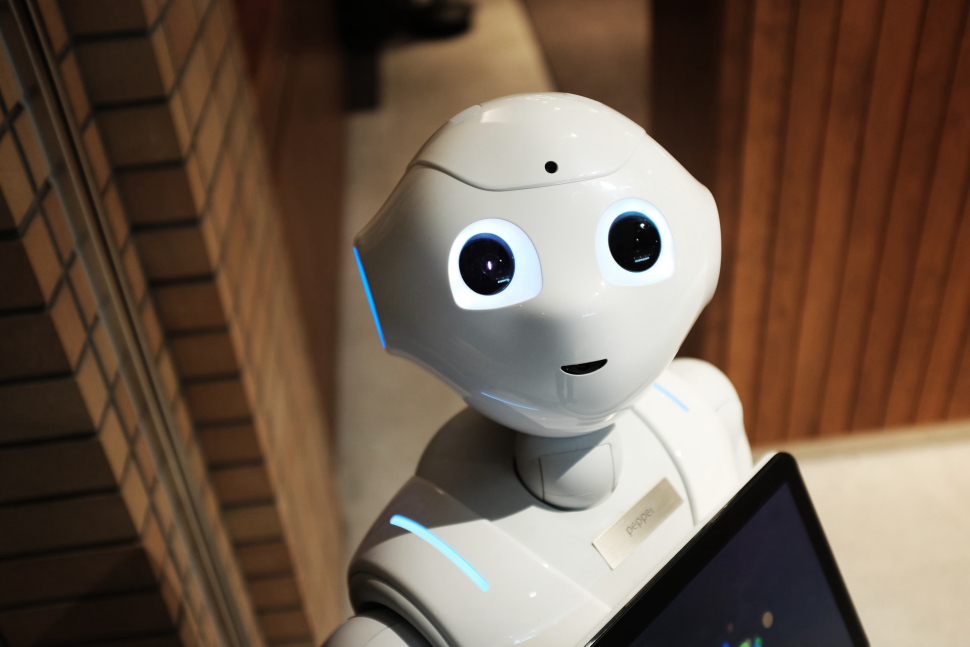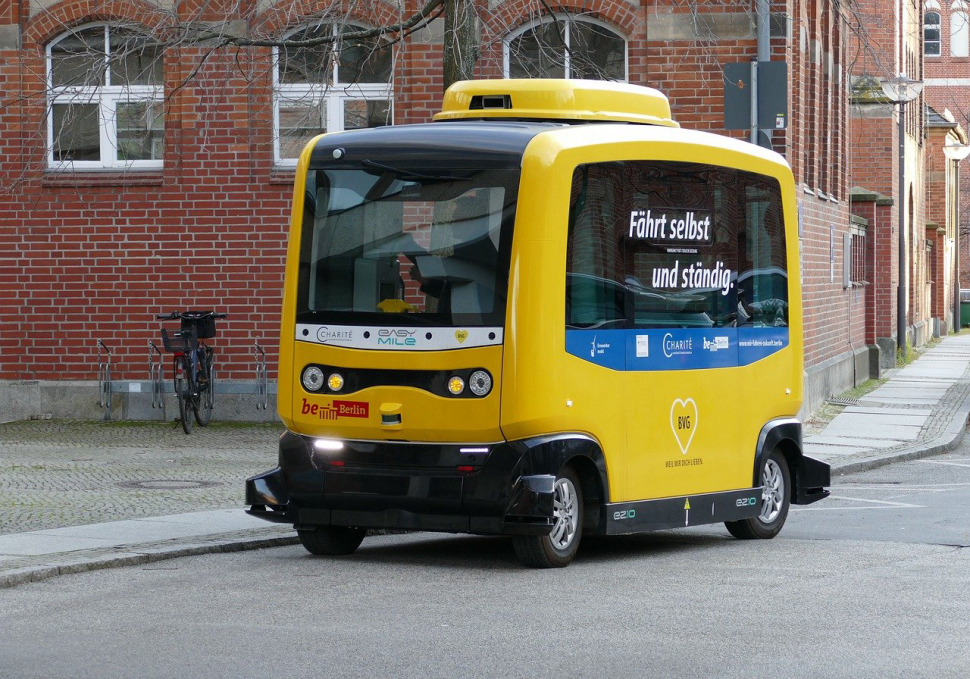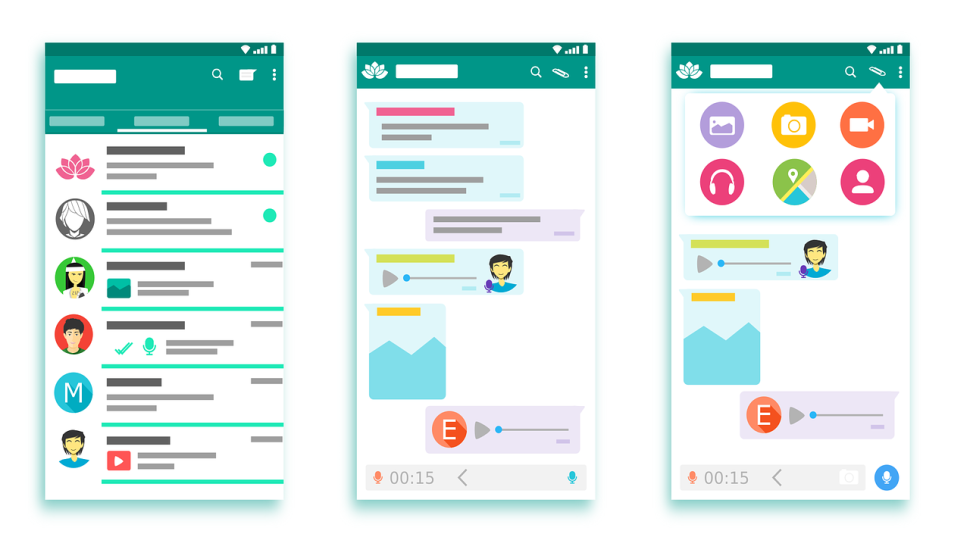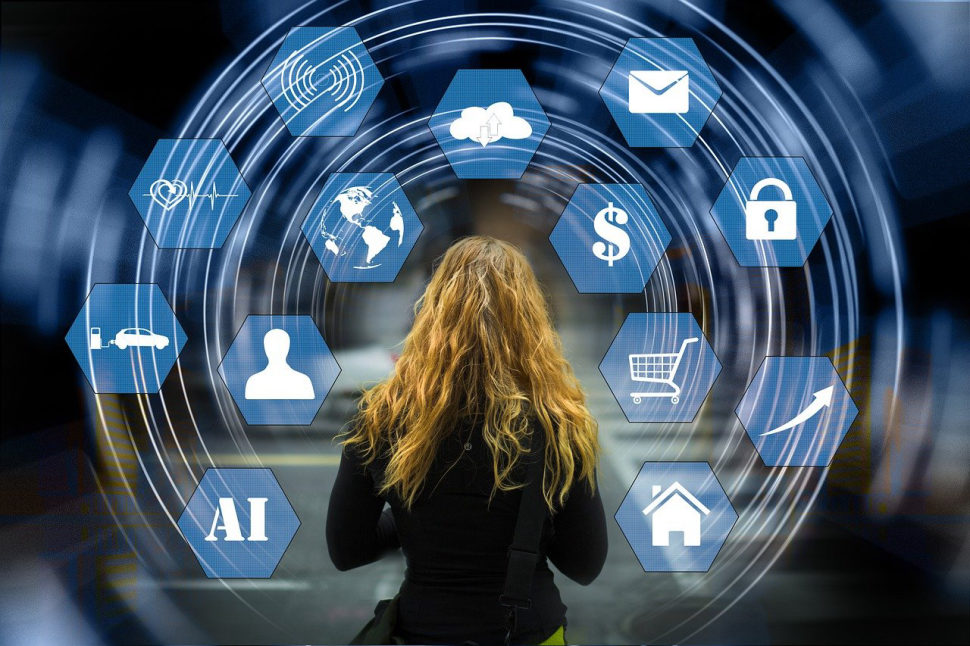Main Examples of Artificial Intelligence Takeaways:
- Artificial intelligence is an expansive branch of computer science that focuses on building smart machines.
- American computer scientist John McCarthy coined the term artificial intelligence back in 1956.
- Artificial intelligence and robotics are two entirely separate fields.
- The four artificial intelligence types are reactive machines, limited memory, Theory of Mind, and self-aware.
- Other subsets of AI include big data, machine learning, and natural language processing.
- Artificial intelligence examples include Face ID, the search algorithm, and recommendation algorithm, among others.
The words artificial intelligence may seem like a far-off concept that has nothing to do with us. But the truth is that we encounter several examples of artificial intelligence in our daily lives.
From Netflix‘s movie recommendation to Amazon‘s Alexa, we now rely on various AI models without knowing it. In this post, we’ll consider eight examples of how we’re already using artificial intelligence.
What is Artificial Intelligence
Artificial intelligence is an expansive branch of computer science that focuses on building smart machines. Thanks to AI, these machines can learn from experience, adjust to new inputs, and perform human-like tasks. For example, chess-playing computers and self-driving cars rely heavily on natural language processing and deep learning to function.
American computer scientist John McCarthy coined the term artificial intelligence back in 1956. At the time, McCarthy only created the term to distinguish the AI field from cybernetics.
However, AI is more popular than ever today due to:
- Increased data volumes
- Advancements in computing and storage
- Advanced algorithms
Hollywood movies tend to depict artificial intelligence as a villainous technology that is destined to take over the world.
One example is the artificial superintelligence system, Skynet, from the film franchise Terminator. There’s also VIKI, an AI supercomputer from the movie I, Robot, who deemed that humans can’t be trusted with their own survival.
Holywood has also depicted AI as superintelligent robots, like in movies I Am Mother and Ex Machina.
However, the current AI technologies are not as sinister — or quite as advanced. With that said, these depictions raise an essential question:
Are Robot Examples of Artificial Intelligence?

No, not exactly. Artificial intelligence and robotics are two entirely separate fields. Robotics is a technology branch that deals with physical robots — programmable machines designed to perform a series of tasks. On the other hand, AI involves developing programs to complete tasks that would otherwise require human intelligence. However, the two fields can overlap to create artificially intelligent robots.
Most robots are not artificially intelligent. For example, industrial robots are usually programmed to perform the same repetitive tasks. As a result, they typically have limited functionality.
However, introducing an AI algorithm to an industrial robot can enable it to perform more complex tasks. For instance, it can use a path-finding algorithm to navigate around a warehouse autonomously.
To understand how that’s possible, we must address another question:
What are the Four Types of AI?
The four artificial intelligence types are reactive machines, limited memory, Theory of Mind, and self-aware. These AI types exist as a type of hierarchy, where the simplest level requires basic functioning, and the most advanced level is — well, all-knowing. Other subsets of AI include big data, machine learning, and natural language processing.
1. Reactive Machines
The simplest types of AI systems are reactive. They can neither learn from experiences nor form memories. Instead, reactive machines react to some inputs with some output.
Examples of artificial intelligence machines in this category include Google‘s AlphaGo and IBM‘s chess-playing supercomputer, Deep Blue.

Deep Blue can identify chess pieces and knows how each of them moves. While the machine can choose the most optimal move from several possibilities, it can’t predict the opponent’s moves.
A reactive machine doesn’t rely on an internal concept of the world. Instead, it perceives the world directly and acts on what it sees.
2. Limited Memory
Limited memory refers to an AI‘s ability to store previous data and use it to make better predictions. In other words, these types of artificial intelligence can look at the recent past to make immediate decisions.
Note that limited memory is required to create every machine learning model. However, the model can get deployed as a reactive machine type.
The three significant examples of artificial intelligence in this category are:
- Reinforcement Learning: Models that learn to make better predictions after several cycles of trial and error.
- Long Short-Term Memory (LSTMs): Models for predicting the next element in a sequence.
- Evolutionary Generative Adversarial Networks (E-GAN): The model produces a kind of growing thing that evolves.

Self-driving cars are limited memory AI that makes immediate decisions using data from the recent past.
For example, self-driving cars use sensors to identify steep roads, traffic signals, and civilians crossing the streets. The vehicles can then use this information to make better driving decisions and avoid accidents.
3. Theory of Mind
In Psychology, “theory of mind” refers to the ability to attribute mental state — beliefs, intent, desires, emotion, knowledge — to oneself and others. It’s the fundamental reason we can have social interactions.
Unfortunately, we’re yet to reach the Theory of Mind artificial intelligence type. Although voice assistants exhibit such capabilities, it’s still a one-way relationship.
For example, you could yell angrily at Google Maps to take you in another direction. However, it’ll neither show concern for your distress nor offer emotional support. Instead, the map application will return the same traffic report and ETA.
An AI system with Theory of Mind would understand that humans have thoughts, feelings, and expectations for how to be treated. That way, it can adjust its response accordingly.
4. Self-Awareness
The final step of AI development is to build self-aware machines — that can form representations of themselves. It’s an extension and advancement of the Theory of Mind AI.
A self-aware machine has human-level consciousness, with the ability to think, desire, and understand its feelings. At the moment, these types of artificial intelligence only exist in movies and comic book pages. Self-aware machines do not exist.
Although self-aware machines are still decades away, several artificial intelligence examples already exist in our everyday lives.
What is Artificial Intelligence Used for Today?
Several examples of artificial intelligence impact our lives today. These include FaceID on iPhones, the search algorithm on Google, and the recommendation algorithm on Netflix. You’ll also find other examples of how AI is in use today on social media, digital assistants like Alexa, and ride-hailing apps such as Uber.
1. Face Detection and Recognition Technology
Virtual filters on Snapchat and the FaceID unlock on iPhones are two examples of AI applications today. While the former uses face detection technology to identify any face, the latter relies on face recognition.
So, how does it work?
The TrueDepth camera on the Apple devices projects over 30,000 invisible dots to create a depth map of your face. It also captures an infrared image of the user’s face.

After that, a machine learning algorithm compares the scan of your face with what a previously enrolled facial data. That way, it can determine whether to unlock the device or not.
According to Apple, FaceID automatically adapts to changes in the user’s appearance. These include wearing cosmetic makeup, growing facial hair, or wearing hats, glasses, or contact lens.
The Cupertino-based tech giant also stated that the chance of fooling FaceID is one in a million.
2. Text Editor
Several text editors today rely on artificial intelligence to provide the best writing experience.
For example, document editors use an NLP algorithm to identify incorrect grammar usage and suggest corrections. Besides auto-correction, some writing tools also provide readability and plagiarism grades.

However, editors such as INK took AI usage a bit further to provide specialized functions. It uses artificial intelligence to offer smart web content optimization recommendations.
Just recently, INK has released a study showing how its AI-powered writing platform can improve content relevance and help drive traffic to sites. You can read their full study here.
3. Social Media
Social media platforms such as Facebook, Twitter, and Instagram rely heavily on artificial intelligence for various tasks.
Currently, these social media platforms use AI to personalize what you see on your feeds. The model identifies users’ interests and recommends similar content to keep them engaged.

Also, researchers trained AI models to recognize hate keywords, phrases, and symbols in different languages. That way, the algorithm can swiftly take down social media posts that contain hate speech.
Other examples of artificial intelligence in social media include:
- Emoji as part of predictive text
- Facial recognition to automatically tag friends in photos
- Smart filter to identify and remove spam messages
- Smart replies for quickly responding to messages
Plans for social media platform involve using artificial intelligence to identify mental health problems. For example, an algorithm could analyze content posted and consumed to detect suicidal tendencies.
4. Chatbots
Getting queries directly from a customer representative can be very time-consuming. That’s where artificial intelligence comes in.
Computer scientists train chat robots or chatbots to impersonate the conversational styles of customer representatives using natural language processing.

Chatbots can now answer questions that require a detailed response in place of a specific yes or no answer. What’s more, the bots can learn from previous bad ratings to ensure maximum customer satisfaction.
As a result, machines now perform basic tasks such as answering FAQs or taking and tracking orders.
5. Recommendation Algorithm
Media streaming platforms such as Netflix, YouTube, and Spotify rely on a smart recommendation system that’s powered by AI.
First, the system collects data on users’ interests and behavior using various online activities. After that, machine learning and deep learning algorithms analyze the data to predict preferences.
That’s why you’ll always find movies that you’re likely to watch on Netflix’s recommendation. And you won’t have to search any further.
6. Search Algorithm
Search algorithms ensure that the top results on the search engine result page (SERP) have the answers to our queries. But how does this happen?
Search companies usually include some type of quality control algorithm to recognize high-quality content. It then provides a list of search results that best answer the query and offers the best user experience.

Since search engines are made entirely of codes, they rely on natural language processing (NLP) technology to understand queries.
Last year, Google announced Bidirectional Encoder Representations from Transformers (BERT), an NLP pre-training technique. Now, the technology powers almost all English-based query on Google Search.
7. Digital Assistants
In October 2011, Apple’s Siri became the first digital assistant to be standard on a smartphone. However, voice assistants have come a long way since then.
Today, Google Assistant incorporates advanced NLP and ML to become well-versed in human language. Not only does it understand complex commands, but it also provides satisfactory outputs.

Also, digital assistants now have adaptive capabilities for analyzing user preferences, habits, and schedules. That way, they can organize and plan actions such as reminders, prompts, and schedules.
8. Smart Home Devices
Various smart home devices now use AI applications to conserve energy.
For example, smart thermostats such as Nest use our daily habits and heating/cooling preferences to adjust home temperatures. Likewise, smart refrigerators can create shopping lists based on what’s absent on the fridge’s shelves.
The way we use artificial intelligence at home is still evolving. More AI solutions now analyze human behavior and function accordingly.
Wrapping Up: Other Examples of Artificial Intelligence
We encounter AI daily, whether you’re surfing the internet or listening to music on Spotify.
Other examples of artificial intelligence are visible in smart email apps, e-commerce, smart keyboard apps, as well as banking and finance. Artificial intelligence now plays a significant role in our decisions and lifestyle.
The media may have portrayed AI as a competition to human workers or a concept that’ll eventually take over the world. But that’s not the case.
Instead, artificial intelligence is helping humans become more productive and helping us live a better life.



















this article is really helpful
If you have experienced substantial financial loss as a result of fraudulent binary option investments, it is important to file a complain about the scam broker and obtain a chargeback service in getting back your asset, I recommend gryphon solicitor as a reliable recovery firm proceeding with their assistance in recovering your asset. I have come across positive feedback about gryphonsolicitor.com, I have use their Service and gain positive outcome and would recommend them which may be worth exploring in securing a legal chargeback service.
Nice Article for the examples of AI.
ကောင်းတယ်
a href=https://pg slot.game/บริการ/pgslot/pgslot vs slotxo/Pgslot vs slotxo/a ทั้งสองค่ายเกมแตกต่างกันอย่างไร มีเกมอะไรที่น่าสนใจบ้างเรามาดูกัน การชนกันจาก 2 ค่ายเกมสล็อตออนไลน์ ชื่อดังสองค่าย ห้ำหั่นกันในเว็บของเรา PG SLOT.GAME
[url=https://pg-slot.game/%E0%B8%9A%E0%B8%A3%E0%B8%B4%E0%B8%81%E0%B8%B2%E0%B8%A3/pgslot/pgslot-vs-slotxo/]Pgslot vs slotxo]pgslot vs slotxo[/url]
*SCAM ALERT*
I lost my funds to an online crypto scam. First, I was not depressed until I discovered I was scammed, as It was a couple of weeks ago after investing almost all my savings in an online Crypto investment franchise. I had €32,000 invested in Crypto online for daily positive returns, but suddenly, I couldn’t access my Capital and profit. After a few weeks of Frustration, I was referred to Recovery expert Jeff Silbert by Blockchain after several emails were sent to them. Luckily, the hacker came through for me when everything seemed to have gone through thin air. You can get help too by contacting this certified hacker Email jeffsilbert39 gmail com, or WhatsApp at +84 94 767 1524. retrieve your hard-earned funds and avoid depression.
Best Regards.
Can I get my stolen or scammed Crypto back// Lost Recovery Masters Got You
I was scammed over ( $275,000 ) by someone I met online on a fake investment project. I started searching for help legally to recover my money and I came across a lot of Testimonies about Lost Recovery Masters recovery Experts. I contacted them providing the necessary information and it took the experts about 36hours to locate and help recover my stolen funds. I am so relieved and the best part was, the scammer was located and arrested by local authorities in his region. I hope this helps as many out there who are victims and have lost to these fake online investment scammers. I strongly recommend their professional services for assistance with swift and efficient recovery.